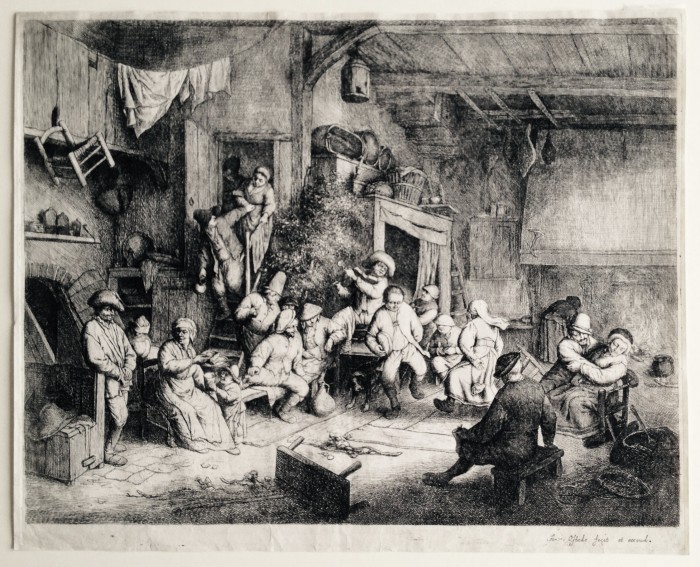The Dance in the Inn
Adriaen Van Ostade (1610-1685), The Dance in the Inn, etching, c. 1652-54). Reference: Hollstein 49, Godefroy 49, sixth state (of 9). In very good condition (possible strengthening or repair upper edge, slight rippling or handing folds), with small margins, larger at bottom, 25.7 x 32.2 cm.
Provenance:
A. J. Lamme (1812-1900), Rotterdam (Lugt 138, stamp verso). Lamme was a painter, who founded the Musee Boymans in 1849 and stayed as founding director to 1870. The sale of his collection was held in Amsterdam in 1901; the collection was described by Lugt as “beaucoup d’estampes de l’ecole hollandaise..”
Watermark: Foolscap with seven pointed collar; Godefry’s watermark number 22. Godefry notes “toutes les epreuves sur lesquelles il figure sont de qualite honorable and imprimee avec soin” (all the proofs with this mark are fine and printed with care); he dates the mark as used in the period 1680-85, the latter part of Van Ostade’s life.
A fine, lifetime impression, noted by Godefry as rare in this state.
The eminent Ostade collector and scholar S. William Pelletier (who owned one fine impression of the Dance, also a sixth state), noted that this “print, the largest executed by Ostade and in many ways the most carefully executed of his entire graphic production, led Rouir to call it the artist’s “Hundred Guilder Piece”, a reference to Rembrandt’s most famous etching” (which was completed a few years earlier). The Dance is Ostade’s most complex print, and therefore has led scholars to various interpretations of the activities. For example Slatkes believed this print to be a wedding celebration. Stone-Ferrier suggested the leafy tree and branch on the floor are signs of an indoor May Day festival celebrating the transition from winter to spring. Whatever the interpretation, the composition is extraordinary.
This print is sold.
